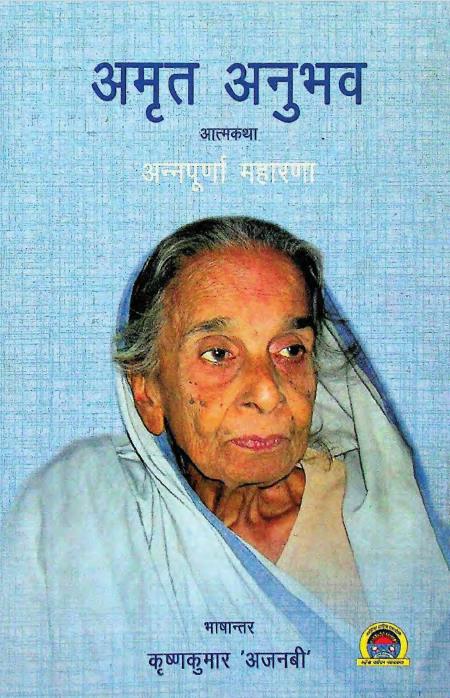Translation is often termed a bridge between cultures, a vital conduit through which ideas and emotions flow across linguistic boundaries. The 2015 translation of the Odia text Amrut Anubhab by Annapurna Maharana, rendered into Hindi by Krushnakumar Ajnabi, serves as a significant example of this phenomenon. The work is not merely a linguistic translation but a transition of thoughts, sentiments, and ultimately, a vision of freedom that resonates deeply with the spirit of Sarvodaya—a term meaning ‘the welfare of all.
Amrut Anubhab, originally composed in Odia, is a literary reflection steeped in the philosophical and spiritual ethos of Odisha. It is a text that invokes a sense of reminiscence, inviting readers to embark on an introspective journey. The essence of the original work lies in its exploration of human emotions and experiences that transcend personal boundaries, echoing the universal quest for liberation. This theme of freedom is particularly poignant in the context of India’s struggle against colonialism, where translation becomes a site of resistance, reclamation, and regeneration.
Maharana’s translation into Hindi, a language that serves as a lingua franca across much of India, accentuates the text’s accessibility and relevance. By choosing Hindi as the medium, Ajnabi and Maharana not only broaden the audience but also emphasize the shared cultural heritage that binds Indian society. The act of translation itself becomes a revolutionary statement, democratizing access to thoughts that might otherwise remain confined within particular linguistic realms.
The dual engagement of Ajnabi and Maharana is particularly noteworthy. Maharana’s original work is infused with personal experiences and philosophical musings, while Ajnabi’s skillful translation captures the nuances of her reflections, allowing deeper meanings to surface. Translation involves more than mere words; it is about the transference of feelings—something that Ajnabi accomplishes with sensitivity and respect for the source material. Through this collaboration, readers witness not just a translation, but a transformation that invites them to ponder their own experiences of freedom and fulfillment.
Central to Amrut Anubhab is the philosophy of Sarvodaya, an ideal that promotes the welfare of all beings. This philosophy aligns closely with Mahatma Gandhi’s vision of a free India, where collective well-being supersedes individual aspirations. As readers traverse the pages of this Hindi translation, they are prompted to reflect on their roles in fostering communal harmony and a just society. The appeal to collective consciousness and shared responsibility comes across as a powerful reminder of the interconnectedness of human lives.
In retrospect, the translation of Amrut Anubhab is an enriching endeavor that not only preserves the literary and cultural heritage of Odisha but also expands its significance to a wider audience. It stands as a testament to the power of language in shaping thoughts, influencing lives, and advocating for peace and prosperity. In a world that often appears fragmented, translations like this one reaffirm the potential of art to unite, heal, and inspire.
Thus, as we reflect on Amrut Anubhab, we are invited to recall our own journeys toward freedom and to consider how we can contribute to the larger tapestry of human existence, enriching it with our unique voices while embracing the ethos of Sarvodaya. In essence, this translation is not just an intellectual pursuit; it is a heartfelt call to action, urging us to partake in the shared responsibility of creating a more equitable and compassionate world.
Books Info
| Books name | Amrut Anubhab |
| Author | Annapurna Maharana; Krushnakumar Ajnabi, Tr. |
| No Of pages | 542 |
| Publisher | Odisha Sahitya Ekademi |
| Publication | 2015 |
| Printed At | Timepass |
| Distributor | NA |

